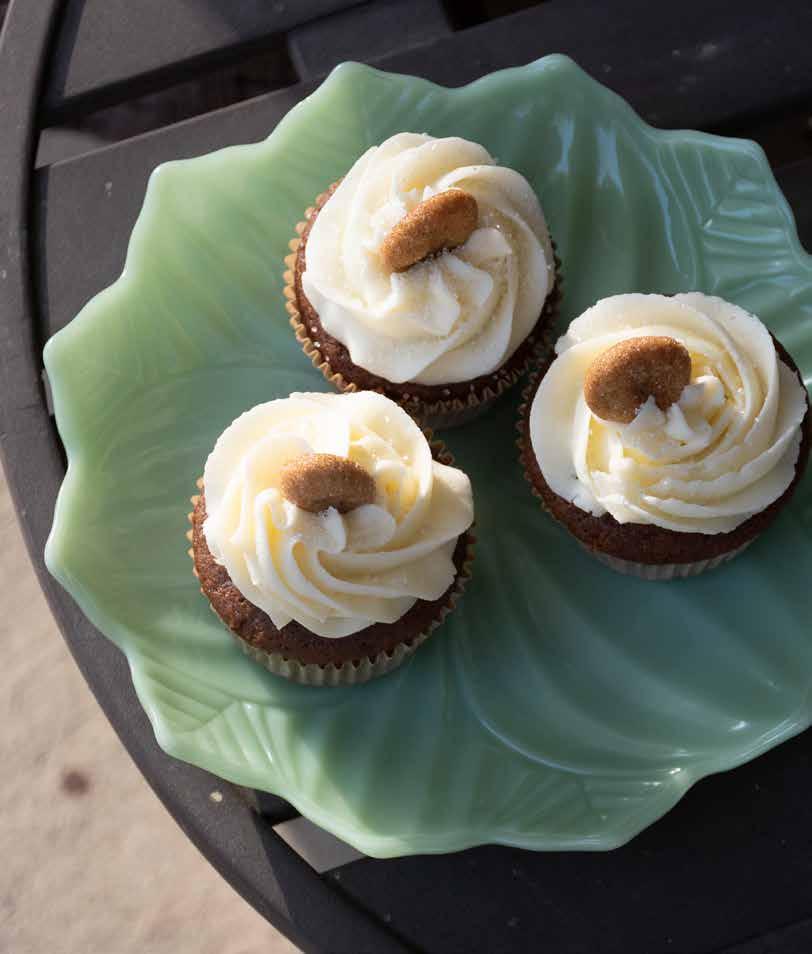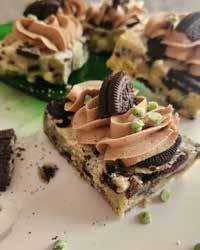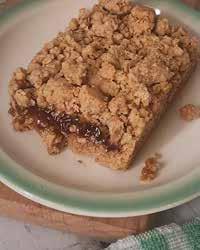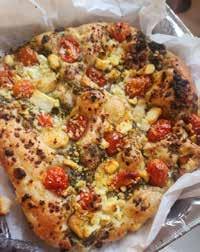
6 minute read
Sweet memories
Gingerbread celebrates Marquis de Lafayette's impact on our community and the country
Time traveling back to 1825, what would you serve the carefully coiffed and elegantly attired Marquis de Lafayette if he came to your house for tea?
Have no idea?
Then take a tip from Mary Ball Washington, George’s mother, and try gingerbread. Not gingerbread men or broken bits of gingerbread houses, but cake-style gingerbread.
History records that Lafayette really liked Washington’s gingerbread, so much so that bakers are still making “Lafayette Gingerbread” today.
Muna Oto, who operates a home-based West Lafayette bakery called Snickle Snacks, is baking up that treat for official Bicentennial events in Lafayette and can bake it for those wanting to hold their own celebratory events during this special year.
In 1825, Lafayette was finishing up a 13-month, 24-state, 6,000-mile “victory lap” of sorts. The tremendously popular Frenchman was only 19 when he sailed for America in 1777 to fight for freedom with the Colonial Army. He earned the rank of major general. And he earned the respect and love of George Washington, who considered him to be a son.
It was President James Monroe who invited the aging Lafayette to return to the U.S. and once again receive the thanks of a grateful nation in 1824-25.
History did a poor job of recording what the Marquis de Lafayette liked to eat, or what was served to him at the dozens and dozens of special dinners in his honor back then.
Our city was named Lafayette during the tour, along with parks and streets and geographical features all over the country, testifying to the love and hoopla generated by the tour. Lafayette was in Kentucky and Indiana in May 1825 when founder William Digby chose the name Lafayette.
But back to food. Lots of food historians have poked into the topic of Lafayette’s favorite foods without much success. Gingerbread happened to be a trendy dessert in Lafayette's time, and he particularly liked the version served by Mary Ball Washington and Betty Washington Lewis, George’s sister.
“The recipe was forgotten until the 1920s when it was rediscovered in a diary in the attic of the Kenmore Plantation, Betty’s home, in Fredericksburg, Virginia,” Oto says.
Kenmore Plantation was badly in need of restoration, and the local chapter of the Daughters of the American Revolution sold copies of the recipe as a fundraiser. That led to the Hills Brothers Company of New York purchasing the recipe and developing a packaged mix known as Dromedary Gingerbread Mix, with part of the profits going toward the restoration. Today, through the power of women and Lafayette’s gingerbread, you can still visit that plantation.
Few people today make that original recipe, which called for as much as four tablespoons of ginger and two whole cups of molasses, Oto says.
“It was one heck of a spicy cake,” she adds, not to mention dense and totally out of touch with 2025 taste buds.
Gingerbread pretty much tops Oto’s list of favorite desserts. So when she learned of the connection to the Marquis de Lafayette, she tackled a modern adaptation of the 18th century recipe by culinary historian Nancy Carter Crump (published in her book "Dining with the Washingtons") and added her own spin to the rich, aromatic cake.
Oto debuted the dessert at Lafayette markets in the fall of 2024, and she liked the fact that it gave her something to talk about. “George Washington, how interesting is that? People would come up and taste the gingerbread, and I’d tell the story and they were intrigued,” she says.
“Today you can find many variations of this recipe in cookbooks and online, with some adding dried fruits and different quantities of traditional gingerbread spices.”
So what else did Lafayette like to eat? Ham. He often ate ham at Washington’s Mount Vernon home, and it is an established fact that the Washingtons sent Virginia hams to him in France.
Another Washington family recipe associated with Lafayette is “Chicken and Rice Lafayette from Mount Vernon,” a fragrant casserole of chicken pieces and rice seasoned with salt, pepper and nutmeg. The original recipe, just a few lines of text, has enjoyed the scrutiny of culinary historians who offer up a more precise version for 21st century cooks.
There are various recipes — even a Manhattan-like cocktail — with Lafayette in their names but with no real proof of a link. World traveler and celebrity chef James Beard loved staying in the Berkeley Hotel when in London. There he discovered an unusual veal dish, named for the Marquis de Lafayette. The hotel still exists on Wilton Place in the Knightsbridge section of London, though “Escalopes de Veau Lafayette” probably does not.
Marquis de Lafayette history dinners have been staged in connection with the current celebration of Lafayette’s tour, and they offer presenters a chance to be creative. For a Vive Lafayette History Dinner in Marietta, Ohio, in March 2024, coordinator Kyle Yoho said the menu reflected both classical French and American cuisines appropriate for the time period of Lafayette’s return visit.
“There is no record of a meal served to Lafayette during his journey … What we included were food connections to Lafayette, such as hams that he was sent from Mount Vernon and a noted record of the nation’s guest enjoying ice cream at one of his stops. We have combined his encounter with ice cream with the fact that his French aristocracy was wild about oranges … hence orange sorbet,” Yoho said.
Curious about the menu? The first course was pate aux champignons (mushroom pate) and salade de bistrot (bistro salad). The second course was jambon à la sauce madère (ham with madeira sauce), haricots verts (green beans) and patates douces (sweet potatoes). The third course was fromage (cheese). The fourth course was baguette au beurre (buttered baguette). The final course was a dessert, sorbet à l’orange (orange sorbet) and a madeleine au chocolat à l’orange (orange chocolate madeline).
Getting back to our original question, “What would you serve the Marquis de Lafayette?”
Perhaps, using the menus and recipes attached to this story, or others found through your own research, you may be inspired to celebrate Lafayette’s Bicentennial with a French-American dinner of your own creation. ★
















